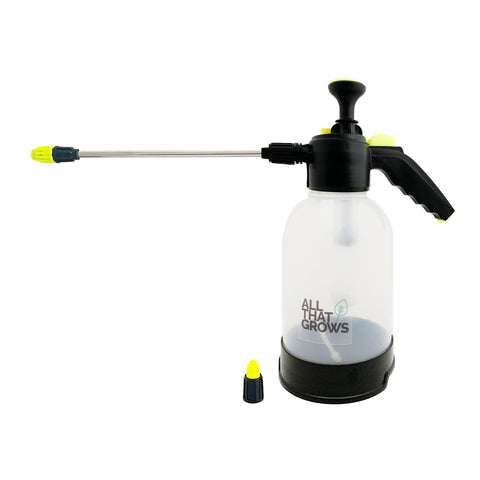Rosemary essential oil is doing rounds on our Instagram reels and YT shorts feed and trying to convince us to start using it for better hair and skin and rightly so. But rosemary plant has a wide variety of culinary uses as well. Let’s explore everything you need to know about this growing and using wonderful herb.
Origin of Rosemary

Rosemary, AKA Salvia rosmarinus, is native to the Mediterranean region, where it grows wild in warm, sunny climates and prefers coastal areas to grow naturally. Rosemary is believed to have been an ingredient in a cologne that Napoleon Bonaparte preferred. It's a perennial herb, meaning it will come back year after year if properly cared for. The name "rosemary" comes from the Latin rosmarinus, which means "dew of the sea", a nod to its coastal origins.
Common Uses of Rosemary

Rosemary is widely used in many recipes to add wonderful flavour to roasted meats, potatoes, and bread. In addition to this, due to its antioxidant and anti-inflammatory properties, rosemary is often used in herbal remedies. And the strong scent and conditioning properties of the herb make it a common ingredient in fragrant potpourris and essential oils.
Growing Rosemary at Home

Growing Rosemary from Seeds
While growing rosemary from seeds is possible, it can be a slow and tricky process, as the seeds have a low germination rate. Sow the seeds in a seed tray filled with well-draining soil. Lightly press them into the surface at a depth of ¼ inch, and cover them with a thin layer of soil. Place the tray in a warm spot with bright light. Keep the soil consistently moist, and the seeds should germinate in about 2-4 weeks.
Growing Rosemary from Cuttings
Growing rosemary from cuttings is much easier and faster than from seeds. Take a 10-15 cm cutting from a healthy rosemary plant, remove the leaves from the lower half, and place the cutting in water or directly into well-draining soil. Within 2-4 weeks, roots should begin to form, after which the cutting can be transferred to a pot or garden bed.
Growing Rosemary in Containers
Rosemary thrives in containers, making it perfect for small spaces or indoor gardens. Choose a container that is at least 30 cm deep, as rosemary plants have a long taproot. Make sure the pot has drainage holes to prevent root rot.
Planting Instructions for Rosemary Seeds

- Soil: Rosemary prefers well-draining, sandy, or loamy soil with a pH between 6 and 7.
- Planting depth: Plant rosemary seeds at a depth of ¼ inch, barely covered with soil.
- Plant-to-plant distance: Space the plants about 45 cm apart to allow good air circulation.
- Sunlight: Rosemary loves full sun and needs at least 6-8 hours of direct sunlight per day.
- Temperature: Ideal temperatures are between 15-25°C. Protect rosemary from extreme cold, as it is not frost-tolerant.
- Humidity: Rosemary prefers low to moderate humidity. Avoid overwatering, as too much moisture can lead to root rot.
- Organic fertilisers: Use a balanced organic fertiliser once every 4-6 weeks during the growing season.
- Watering: Water rosemary deeply but infrequently, allowing the soil to dry out between watering sessions.
Pests and Diseases that Can Affect Rosemary Plants

Though rosemary is a relatively hardy plant, it can be affected by pests like aphids, spider mites, and whiteflies. Fungal diseases such as powdery mildew can also occur, especially if the plant is grown in humid or poorly ventilated conditions. Regularly check the plants for signs of pests and remove affected leaves promptly. Neem oil or insecticidal soap can help control these issues.
Best Companion Plants for Rosemary

Rosemary is a good companion plant for many garden vegetables. It can be planted alongside carrots, beans, cabbage, and sage. Its strong scent helps deter pests like carrot flies and cabbage moths, making it a useful addition to vegetable gardens. Avoid planting rosemary near cucumbers, as it can inhibit their growth.
Harvesting Rosemary

Harvest rosemary by snipping off stems as needed. The best time to harvest is just before the plant flowers, as the oils are most concentrated. To use fresh rosemary, simply strip the leaves from the stem and add them directly to your dish. To dry rosemary, hang the sprigs upside down in a dry, airy location. Once dried, store the leaves in an airtight container. You can also freeze rosemary sprigs or make rosemary-infused oil to preserve its flavour.
Quick Recipe Using Rosemary

Ingredients
500 g baby potatoes
2-3 sprigs of fresh rosemary
2 tbsp olive oil or butter
Salt and pepper to taste
4 garlic cloves, minced
Instructions
- Boil the baby potatoes for 10 minutes until tender.
- Drain the potatoes and let them cool slightly.
- Heat olive oil in a pan over medium heat.
- Add the garlic and rosemary sprigs, sautéing for a minute.
- Toss the potatoes in the oil mixture, coating them evenly.
- Cook for 5-7 minutes until the potatoes are crispy and golden.
- Season with salt and pepper, and enjoy!
Growing rosemary at home is a great way to have fresh, fragrant herb on hand for all kinds of recipes while adding beauty and fragrance to your garden. Whether you’re using it to spice up dishes or making your garden more pest-resistant, rosemary is a must-have herb for any home gardener.
Shop rosemary seeds today and start growing this wonderful herb at home. Happy gardening!


 Sign In
Sign In

















Let us know your feedback
* Comments must be approved before being displayed.